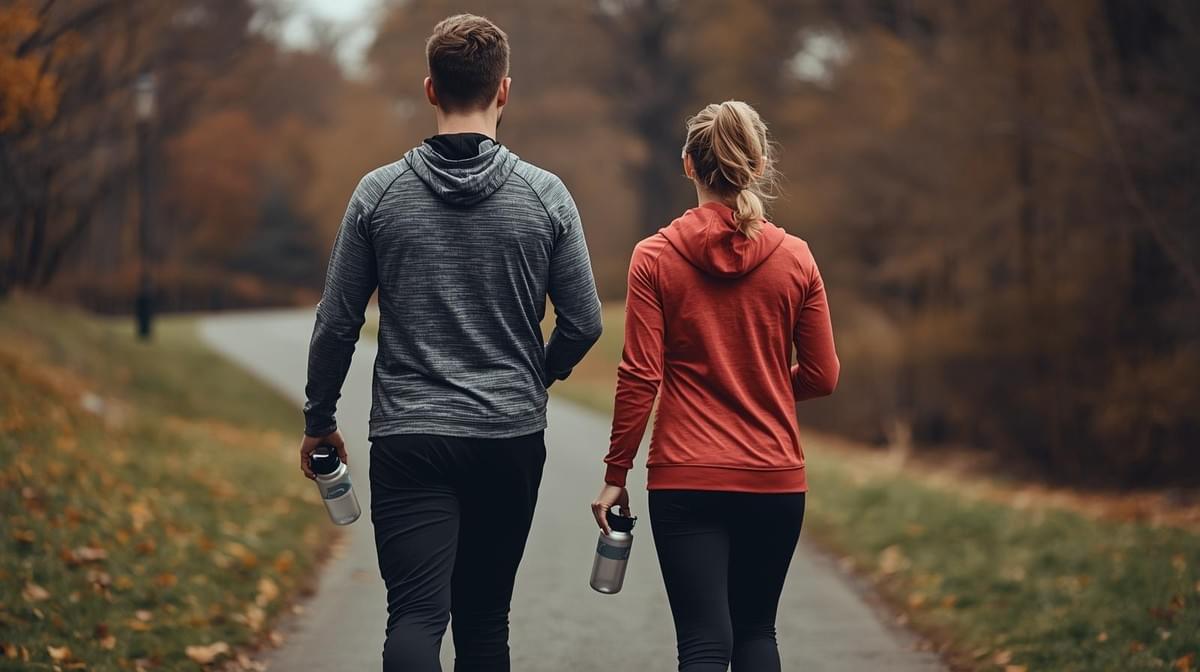
We talk a lot about “living longer,” but what most of us actually want is more good years—the decades where you’re mobile, clear-headed, independent, and up for anything. If there’s a single habit that buys you the most of those years, it’s not a magic supplement or a juice cleanse. It’s strength training. Muscle is far more than aesthetics; it’s a living, glucose-hungry, force-producing tissue that keeps your metabolism, bones, balance, and brain in the game. Think of it as metabolic armour you build and wear for life.
Sarcopenia: the quiet thief of capacity
Sarcopenia is the age-related loss of muscle mass and strength. It doesn’t arrive overnight; it creeps. From mid-adulthood onward, we naturally lose muscle if we don’t challenge it, and the loss accelerates after about 50. Less muscle means less strength, less power, slower gait speed, more fatigue, and a smaller “reserve” to deal with illness or injury. The antidote isn’t mystery—progressive resistance training. When you regularly ask muscle to do a bit more—another rep, a slightly heavier load, a deeper range—it responds by adapting. You don’t need marathon gym sessions: two to three well-structured, full-body workouts per week can halt sarcopenia and often reverse it.
Falls: strength and power are your safety net
Falls aren’t just accidents; they’re capacity failures—a mix of weak hips and ankles, poor balance, slow reaction time, and low confidence. That’s why falls are a leading cause of injury in older adults and a major trigger for the “downward spiral” (hospital stay → bed rest → rapid muscle loss → reduced independence). Strength training directly targets the weak links: stronger legs improve sit-to-stand ability and stair climbing; stronger glutes and calves stabilise every step; better grip strength helps you catch yourself. Add a dash of power training—controlled, faster intent on light movements like sit-to-stands, step-ups, and medicine-ball presses—and you train the quick reactions that keep you upright when life gets wobbly.
Insulin sensitivity: muscle is your glucose sink
Muscle is your body’s largest site for glucose disposal. Every time you contract muscle, you open more “doors” (GLUT-4 transporters) for glucose to move from blood into muscle, where it’s stored as glycogen or burned for energy. More and better-trained muscle means better insulin sensitivity, steadier blood sugar, fewer crashes, and an easier time managing body fat. This is why two people can eat the same meal and have very different blood sugar responses: the lifter’s muscles act like a sponge. Resistance training also boosts mitochondrial function and metabolic rate—so you’re not just burning calories during the workout; you’re subtly burning more all day.
Bone density: load it or lose it
Bones remodel in response to load. That’s not a motivational poster; it’s biology (Wolff’s Law). When you lift, jump, carry, and brace, you send a message to your skeleton to lay down more mineral and strengthen its architecture. This is crucial around menopause for women and later life for everyone, when bone loss accelerates. Multi-joint, weight-bearing lifts (squats, deadlifts, presses, rows) plus impact in safe doses (hops, step-downs, loaded carries) are the strongest signals you can send. Add adequate protein, calcium, and vitamin D, and you’ve got a blueprint for bones that don’t just survive—they resist fracture.
Muscle as “metabolic armour”
Why call it armour? Because muscle protects you on multiple fronts:
- Inflammation & myokines: Contracting muscle releases signalling molecules (myokines) that have anti-inflammatory, brain-supporting, and metabolism-enhancing effects. Training literally changes your internal chemistry in your favour.
- Illness & bed rest buffer: If you ever get sick, have surgery, or need a few days off your feet, muscle is a reserve that prevents rapid functional decline. With more lean mass and strength, you bounce back faster.
- Hormonal balance: Resistance training nudges key hormones and growth factors that support tissue repair and mood. You feel and function younger because your cells are behaving that way.
- Daily independence: Groceries, grandkids, luggage, garden work—real life is resistance training. Stronger muscles turn chores into non-events and keep your world big.
What effective (and safe) training looks like
You don’t need a bodybuilding split or an athletic trainer on speed dial. You need consistency and a sane plan:
- Frequency: 2–3 full-body sessions per week. Non-consecutive days.
- Movements: Squat (or sit-to-stand), hinge (hip-hinge/deadlift pattern), push (floor/bench/overhead), pull (rows/pulldowns), and carry (farmer’s or suitcase). That’s your longevity stack.
- Progression: Start with a load you can lift with solid form, then add a rep or a small weight increase each week. Use an RPE guide (aim 6–8/10 effort) so it’s challenging but not reckless.
- Balance & power: Mix in heel-to-toe walks, single-leg stands near support, light step-ups done with “quick up, controlled down” intent.
- Mobility & warm-up: 5–8 minutes: brisk walk, hip hinges, band pull-aparts, gentle ankle rocks. Save deeper stretching for after.
- Recovery: Sleep is anabolic. Most adults do best with 7–9 hours. Walk daily to keep joints happy and recovery high.

Nutrition that supports the mission
Training is the spark; protein and smart nutrition are the bricks and mortar.
- Protein target: A simple rule of thumb is to include 25–40 g of protein at each meal, prioritising leucine-rich sources (eggs, dairy, fish, poultry, lean meats, tofu/tempeh). Spread across 2–4 meals.
- Creatine: Well-studied, inexpensive, and helpful for strength, power, and possibly cognition. Typical dose: ~3–5 g/day with plenty of fluids.
- Carbs for work capacity: Don’t fear them—carbs around training improve performance and help refill muscle glycogen.
- Whole-food base: Build plates around quality protein, colourful plants, whole grains/legumes, and healthy fats. Your muscles (and heart) will thank you.
The payoff: more good years
Add this up and you get a body that moves better, handles sugar better, resists fractures, and recovers faster. You keep your independence, your confidence, and your options. That’s healthspan: not just surviving, but living on your own terms.
